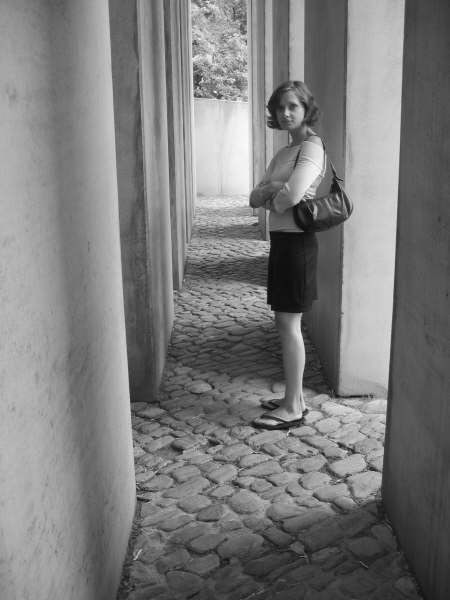I am very uncomfortable with something I wrote in my post a few days ago. I actually didn't write it, but implied it - and this is much worse than if I had actually written it. Often, I think, harmful things implied are much more detrimental than harmful things declared.
What is this "something" that makes me so uneasy? Well, on Sunday, I wrote of my new resolution. I resolved to spend less time sitting around thinking about public history in general, and about digital history projects in particular. I implied that my time would be much better spent larning how to implement projects that I could eventually realize. Worse still, I may have unintentionally paired the act of reflection with my clunky, defunct printer, and that of action with the "sexy" Web.
Yes, I know, my blunder is far from earth-shattering. It has, however, troubled me. This blog is, after all, part of my public persona. What if a reader thinks that I - gasp - believe that reflection and action can't co-exist? What if I'm conveying a sense that the grad student should think less and do more? That would be terrible. I advocate a philosophy of learning completely opposed to such a model. This is my apology post.
Of course, action and reflection should, ideally, co-exist in any learning experience. It seems to me that even pre-school lesson plans are based on this idea. I have a dusty memory of listening to a story about teddy bears in daycare. Afterwords, we drew and coloured-in scenes from that story.
Fast forward a few (ahem!) years, and we're learning in layers this fall. These layers are integrated. They're part of one big activity. We're reflecting on what museums should do, and we're working really hard (and are losing sleep) to make an exhibit. We're learning about "the Infinite Archive" and we're trying to make web pages. And, just before you think this post contains nothing but schmultzy, overly-generalized reflection, let me bring it to a concrete example.
Right now, I'm tyring to figure out the best way to merge my desire to play around with webpage building, or even wiki writing, with the need to document and organize my ongoing artefact research. In our meeting about the Museum London historical exhibition we're developing, we discussed the problem of how to make visible (to each other, to our public, and to our Professor) all of the research that we've each put into this group project. The problem, of course, is that a short item label for the museum exhibition can't convey the depth of our work.
My solution so far has been this: I have been using our wiki as a sort of repository for the best (as in most useful for our purposes) bits of my research. In so doing, I'm afraid I may have caused some frustration on the part of my more organizationally-minded colleagues, who - rightly so - would like a streamlined wiki. I apologize for that! I do, however, find the wiki a convenient way to organize my material. To keep from making too many enemies among my colleagues, I would like to play around with using a website as a good repository for my ongoing research. Of course, that requires me to build a website. I stand by my resolution to try to do this - though, currently, other demands are keeping me from "getting down to (more of) it" as quickly as I had hoped.
A website, as we read many weeks back, allows for doing history in hypertext. Now, I'm really inspired by notions of harnessing the web, and harnessing our participation in developing the web, to extend the potential of real, living, working communities. I'm drawn to the idea of making my ongoing research transparent to the viewer on a website precisely because I think it has great potential to make the relationship between me and my colleagues, and the relationship between our exhibition production team and our consumer, really dynamic.
We have the potential to take the historical research that we do in the university library, and that we cobble together behind card-swipe entry only T.A. room office doors, into a public environment. That public environment is becoming increasingly user-orientated. What better way to make our hard work useful to the community than to plant it, in "raw" form, (that is, as a "work-in-progress", and not just as a final result) on the web?
I understand that, in many cases, it might be inappropriate of the public historian to make her research process transparent. Yet, I think that in others, the public historian has opportunities for forging dynamic relationships with her audience right from the first stages of her research - and she can forge those relationships by rendering her process as transparent as possible.
Unfortunately for us UWO PH students, we are working under a strict time deadline to get our research done and "cooked." This reality prohibits much experimentation with innovative ways of doing and presenting our research. Deadlines are things of the real world, though, and I don't decry our situation in any way. I'm just reflecting on what the great potential of our combined work, fuelled by our ongoing learning. There we are: action and reflection are together again, after a brief but heartbreaking separation on this blog. Phew! I feel better.
Wednesday, November 08, 2006
Subscribe to:
Post Comments (Atom)

No comments:
Post a Comment